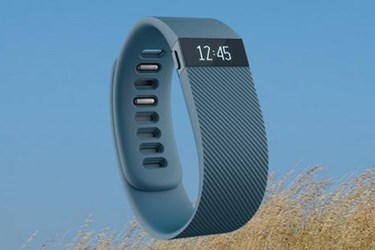mHealth: Beyond The Gadget

By Kristin Russel, Vice President of Marketing and Product Management, Transcend Insights
Patients wearing a Fitbit®, an Apple Watch® wrist wearable device or other Wi-Fi-enabled exercise trackers are a common sight in many physician offices. These devices may have weeks’ worth of data on their daily diet, weight, exercise, and even sleep — useful information a physician should have, right?
Unfortunately, until these insights are integrated into care team workflows, this goldmine of data will remain locked up in patients' smartphones indefinitely.
The Use Of Wearables And Mobile Apps For Health Monitoring Has Doubled
The term mHealth is frequently being used to describe the burgeoning market for mobile health devices and software. An Accenture survey found mHealth is skyrocketing with the use of wearables and mobile apps for health monitoring doubling over the past two years. Additionally, among consumers surveyed, the use of healthcare related apps jumped from 16 percent in 2014 to 33 percent in 2016 and the use of wearable health technology climbed from 9 percent to 21 percent. Moreover, three out of four consumers said they would wear a health monitoring device if their physician asked them to and 90 percent would share their own wearable or app data with their physician.
Investors support mHealth as well: in the first quarter of 2016 alone, wearables received $260 million in venture capital funding — the most of any health information technology (IT) area — and mHealth apps received $120 million, according to a Mercom Capital Group survey. Additionally, the closely related field of telemedicine received $171 million resulting in a total venture investment in health IT of $1.4 billion.
The Power Of mHealth And Disease Prevention
Clearly, mHealth data — whether extracted from an Apple Watch, a Fitbit, mobile app, scale, blood pressure cuff, heart monitor or a host of other internet of things devices yet to be invented — can have a huge impact on our health and wellness if care teams can determine how to tap into this plethora of data and integrate the information into the master patient health record, aka the EHR.
We can already imagine a specialist located hundreds of miles away from a patient monitoring the patient’s vital signs and identifying reactions to new medications to determine how well he or she is recovering from a recent procedure. With advanced engineering and the elimination of data silos, we’re envisioning a world where case managers can be alerted immediately of a patient’s possible water retention via a home scale device to provide diuretics early enough to prevent a visit to the emergency room; or better yet, care teams that can leverage mobile apps to motivate an individual to make small changes in their health habits that help keep them from developing a chronic disease in the first place?
Steps To Take To Prevent mHealth From Becoming Just Another Silo On The Health IT Farm
As the healthcare industry continues to strive towards achieving true community-wide interoperability — being able to combine data from multiple different sources into a single comprehensive view of a patients’ health — we also need to make sure that interoperability efforts extend outside our hospitals and clinics to encompass the health IT that our patients carry with them every day. The diabetic patient in this article has just about every sugar-monitoring device out there, but is frustrated these devices cannot share information with each other or with her physician. Personally, I look forward to the opportunity to more fully leverage my own wearable device (loaded with accumulated health-related data, from every mHealth app imaginable).
As an industry, we need to prevent mHealth data from becoming just another silo on the health IT farm. Now is the time to be designing platforms and adopting standards that make it easy for mHealth apps and devices to share data, not only with one another but with EHR vendors across an entire community. All of that venture investment has real potential to improve our health, but we need to treat mHealth like the valuable data source that it is.
About The Author
Kristin Russel is a successful entrepreneur and award-winning marketing professional with proven leadership experience in the healthcare information technology (HCIT) industry. Having led marketing and sales teams at both Cerner and Omnicell, Russel has a deep understanding of the HCIT space. Before working at Transcend Insights, Russel led North American marketing for Omnicell, overseeing the complete product portfolio for the medication and automation solutions vendor. Russel’s first venture into healthcare was with Cerner, where she drove client experience initiatives and supported Cerner’s foray into physician practices. Before working in the HCIT industry, Russel founded Anachron and secured financing to start the global online banking solution that was ultimately sold to ING bank. Russel uses her MBA in international finance from France and her master’s degree in public administration from Carleton University in Canada to support the strategic endeavors of the organizations she leads.
Fitbit® is a registered trademark and service mark of Fitbit, Inc., Apple Watch® is a registered trademark of Apple Inc. and Transcend Insights® is a registered trademark of Transcend Insights, Inc. All other trademarks are the property of their respective owners.
This article is an independent publication of Transcend Insights, Inc. and has not been authorized, sponsored, or otherwise approved by Apple Inc.
